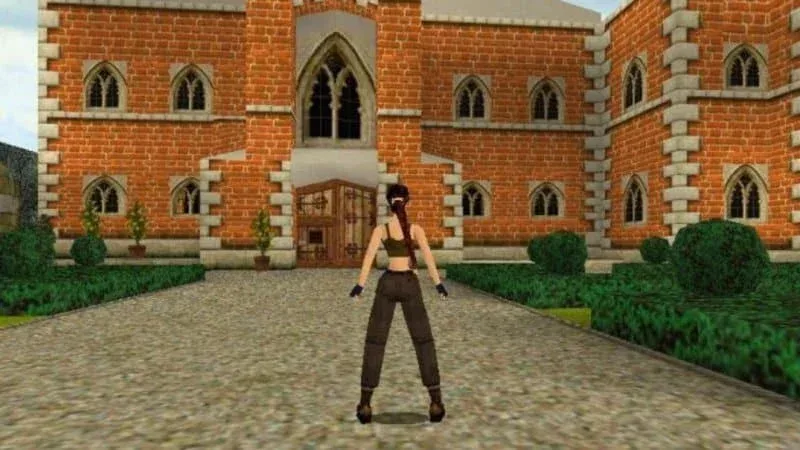
For many, the Sony PlayStation was a revolutionary home console. It used games that were burnt onto compact discs rather than the cartridges like their competitor Nintendo had used. This allowed much more data to be stored, which in turn meant bigger and better games. Were the drives that read the CD’s also capable of playing DVD’s?
Out of the box, the PlayStation doesn’t play DVDs because the technology was not known at the time of the console’s release. The PlayStation debuted in 1994 and the first DVD was released in 1996. That said, the history behind why Sony chose to go with a Compact Disc format rather than cartridge are interesting and are worth a casual read.
In today’s article, I am going to tell you about the PlayStation One’s architecture and its compatibility with some optical discs. We know that the PlayStation used CD-ROMs and that the games were released on CDs, but could the console play DVDs? That is the primary question I am going to answer in today’s article, so – enjoy!
A short introduction to the PlayStation console
The beginning of what became the PlayStation dates back to 1986 with a joint venture between Nintendo and Sony, which is particularly interesting as these two companies would become bitter rivals in the battle for domination in the field of video games.
Nintendo had already produced the floppy disk technology to supplement its cartridges in the form of the Family Computer Disk System and wanted to continue that complementary storage strategy for the Super Famicom. Nintendo approached Sony to develop a CD-ROM add-on, tentatively titled “Play Station” or “SNES-CD”.
A contract was signed and work began on the addition. Nintendo chose someone they had worked with before, Ken Kutaragi, who was later nicknamed “The Father of the PlayStation”, who, in turn, convinced Nintendo to use the Sony SPC-700 processor for their Super Famicom / SNES consoles through an impressive demonstration of the processor’s impressive features.
The video game company, however, broke with Sony, an industry neophyte, because they felt that they would lose too much control and too many benefits from selling games on CD. Kutaragi was almost fired by Sony because he was originally working with Nintendo without Sony’s knowledge (while still being employed by Sony).
It was then that Sony’s CEO, Norio Ohga, recognized the potential of Kutaragi’s chip and worked with Nintendo on the project. Ohga kept Kutaragi at Sony, and it wasn’t until Nintendo canceled the project that Sony decided to develop its own console.
Sony also planned to develop a Sony-branded console compatible with the Super NES, but that would have been more of a home entertainment system, playing Super NES cartridges and with a new CD-based format that Sony would design. This should also be the format used in SNES-CDs, giving Sony a high degree of control despite Nintendo’s leading position in the video game market.
Sony launched the PlayStation in Japan on December 3, 1994. Success was immediate. The key was in the facilities offered by the company to video game developers, excited about the great technical possibilities, the three-dimensional output, and the disc.
Developers took several financial risks when creating cartridges for Sega or Nintendo; on the other hand, Sony offered all the facilities to have a varied catalog of games. Immediately the big names in the industry joined. Titles like Gran Turismo, Metal Gear or Final Fantasy, all of which are PlayStation classics, would soon become fundamental titles in the history of video games.
The PlayStation popularized an accessory that, although already existing in other consoles (NEO-GEO, for example), had not come to full life: the Memory Card. The memory card allowed saving game data and the user’s game progress to continue from where they left off.
Even with the arrival of more powerful competitors like the Nintendo 64, Sega Saturn and the Dreamcast, the PlayStation continued to be the best-selling console and with an extensive library of blockbuster games.
The success of the Playstation brand was enormous and Sony became the biggest player in the industry in a very short time, beating competitors with years of experience in the industry. In the mid-2000s, the PlayStation was redesigned, getting smaller and with rounded curves. This model was named PSOne, and was now available in white, unlike the original grey color.
That same year, the console’s successor, the PlayStation 2, was also released. The PlayStation was gradually abandoned and its production ended in 2006, with the incredible mark of more than 100 million units sold worldwide. It was the fifth generation’s best-selling console, surpassing Sega Saturn and Nintendo 64, both consoles with a much larger tradition and companies that had dominated the market before the PlayStation hit the stores.

Does the PlayStation play DVDs?
Now that you know all the information about the console’s architecture and hardware, I can give you the answer, although it’s quite obvious by now.
Due to its CD-ROM-based architecture, the PlayStation One cannot play DVDs of any kind. In fact, the DVD wasn’t even created when the PlayStation first came out; it arrived two years later and it took several years before it became commercially popular. There was absolutely no way for the PlayStation One to be able to play DVDs and there wasn’t even a way to upgrade the console to allow it to play DVDs.
The PlayStation One could, of course, play CDs, and all the games were released on CD-ROMs. But the DVD was not available at the time and the PlayStation was useless when these optical discs hit the market. Namely, DVDs used a somewhat different technology and required a different architecture to be read, something the PlayStation One just wasn’t equipped with. On the other hand, its successor, PlayStation 2, played primarily DVDs but was also backwards compatible and could play CD-ROM-based videogames for the PlayStation One.

